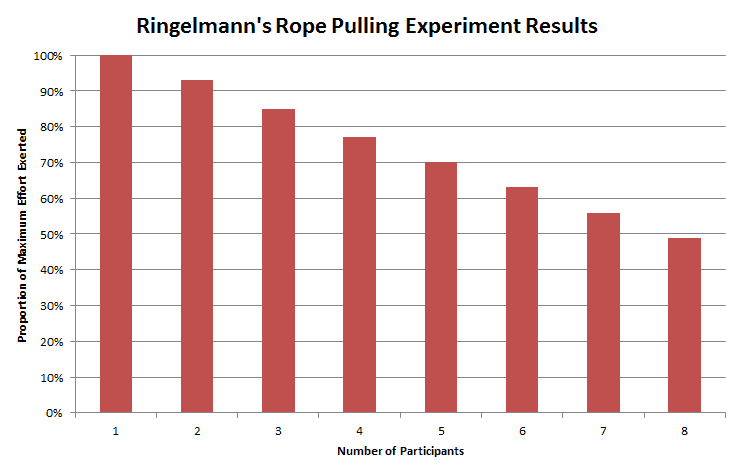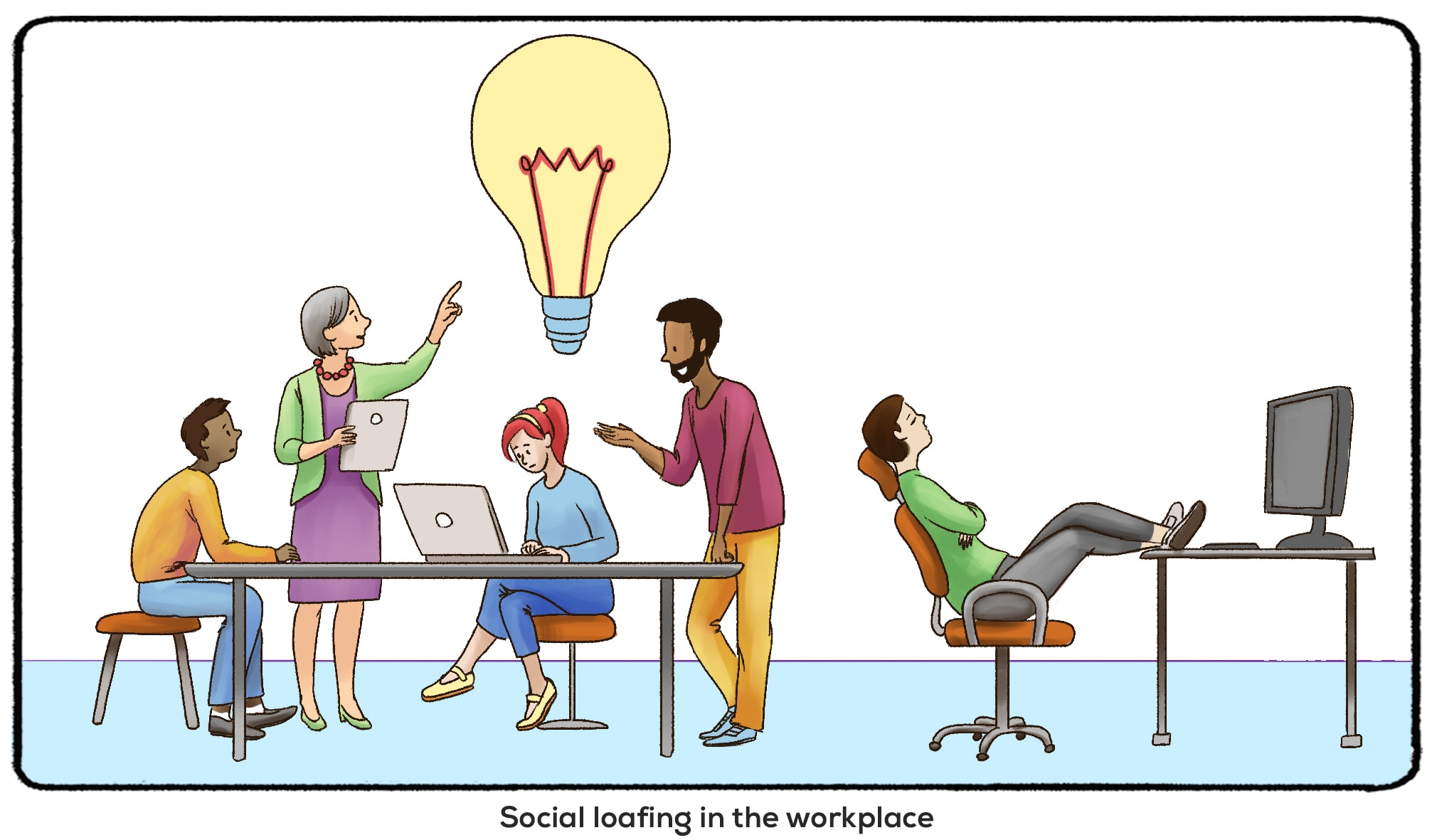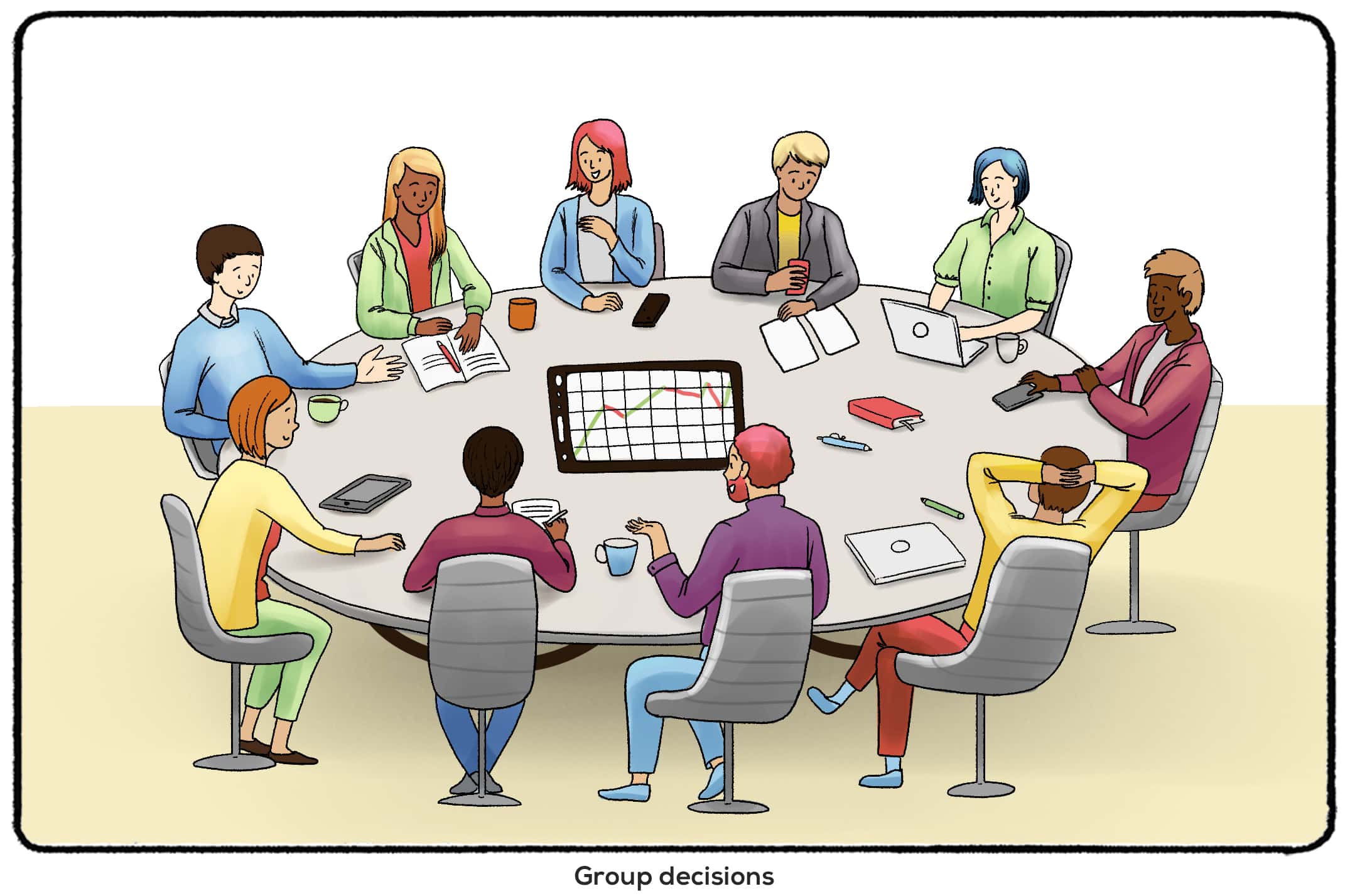If you’re here, you may have a research project or some homework that has to do with the term Social Loafing. Have no worries, after reading this article, you’ll have a complete understanding of what social loafing is, how it works, and specific measures you can take to prevent it.
What is Social Loafing?
Social loafing occurs when an individual is doing less when working in a group, as opposed to putting forth full effort if they were alone. Maximillian Ringelmann discovered it in 1913 when he noticed group pulling-power in a tug-of-war was less than the sum of individual strengths.
In fact, the average contribution decreased each time he added members to the team.
This phenomenon suggests members put in less effort as group size grows. When you think about it, social loafing makes a mockery of the idea that putting people into teams encourages them to work harder. An entire human resource team could have palpitations by reading this. But don't worry. This is only half the truth - I'll explain more below.
Social Loafing Examples
Tug of war, group homework projects, and an entertainer asking an audience to scream are all examples of social loafing because as you add more people to a group, the total group effort declines.
Tug of War is the perfect example because it's where Maximillian Ringelmann originally found it. He realized that as you add more people to a Tug of War game, the amount of pressure did not scale up perfectly. In fact, the more you add, the less each individual worked. Here's an image to show the overall effort as he added more pullers:

Group homework projects are another great example. We've all seen the meme where one student does all the work and the others get the grade. Those who don't work on the project are considered social loafers.
Examples of Social Loafing in Social Settings
Have you ever been at a concert or an event where the main speaker asks the audience to say something or maybe clap? This is a perfect place for social loafing to happen. Sometimes the speaker may even say "That wasn't loud enough". Interestingly, the same thing happens in tug of war; as you add more people to a group, they are less likely to participate in what the speaker is asking them to do.
Examples of Social Loafing in the Workplace
Have you ever been in a brainstorming meeting with your team and someone lets everyone else come up with solutions? Or worse, they only chime in to shoot down another person’s idea. That’s social loafing. Another example of social loafing in the workplace is simply logging off when members of your team step up to complete the daily tasks shared in a meeting or on Slack. When you’re in a Zoom conference room of 100, it’s easier to feel like you can turn your camera off, grab a snack, or zone out.

Examples of Social Loafing in Sports
But you don’t have to be in a suit and tie or tackle an academic project to see someone “loafing.” When you’re on a team with multiple star players, it may be easy to think that one of them will do the brunt of the work. Someone may not speak up and ask their coach or captain to be involved in big plays or lead the team because they are not in charge or all eyes are on other players.
Social Facilitation vs. Social Loafing
Did you know that social loafing is actually the result of a phenomenon known as “social facilitation?" Social facilitation is the idea that a person’s performance changes when they are around others versus when they are alone. Often, performance increases; however, when groups become larger and larger, performance may decrease (social loafing.)
Social Loafing vs. Bystander Effect
We can also apply this idea to other theories regarding group dynamics. Group projects and tug-of-war require everyone to pitch in. But what happens when you’re in a group and only one person must complete a task? Does social loafing apply here, too?
Yes and no. A similar effect takes place, one that is infamous for having dire consequences: the bystander effect.
The bystander effect suggests that when people are bystanders to an emergency, they will feel less motivated to help than if they were alone. For example, if you were the only one in a house with a person who fell down the stairs, you are likely to go over to them and help. But if you’re on a crowded subway and someone falls, you’re not going to rush to their aid. Neither will the person next to you. Or the person next to you.
I say this has dire consequences because it’s often tied to the story of Kitty Genovese. Kitty Genovese was murdered in 1964 in New York City. Her screams were allegedly heard throughout her crammed Queens neighborhood - but no one came to her aid. Fun fact: this murder eventually led to the 911 system that we use today to report emergencies!
The same causes behind social loafing could be said to be causes of the bystander effect!
What Causes Social Loafing?
Team members begin loafing socially when they feel they are not going to achieve much, and therefore conclude that their participation is optional. Here are two main reasons that contribute to social loafing.
Loss of a sense of individual responsibility– Ringelmann’s experiment with a tug-of-war team showed how personal responsibility evaporated according to team size.
The best sports team coaches achieve incredible results when they hold the team together and motivate individual players and as well as the collective. They also know their team needs space to ‘let off steam’ too.
Reduced belief in the value of contributions– If a team member feels their impact will not be worth much - especially in a large team - they may decide to back off and enjoy the ride at the expense of the others.
This is one of the main reasons many of us don’t volunteer for projects, or take up leadership positions. It’s probably also why half the American population stays away from the polls during presidential elections.
In many cases, the individual that is "loafing" may not even realize it.
Also common is the division of "in-group" and "out-group" members. This is common during homework projects when a small number of students work together and complete a large majority of the work.
Is Social Loafing Inherently Bad?
A user on the SocialWork subreddit asked “How much ‘social loafing’ do you engage in?” They go on to describe social loafing in an office setting as socialization and water cooler talk. But something interesting happens in the comments. Other users do not see social loafing as this terrible, shameful thing. Instead, these breaks are encouraged:
- “I don't formally take breaks ( two 15s and a 30) and typically shoot the breeze for about an hour throughout a day. I work at a center for those unhoused and spend 30-60mins a day chilling with clients as well. "Loafing around" with clients or just in the area is a benefit by putting me in a more casual, stress free and approachable environment. It's a win win.”
- “Do we ALWAYS have to be productive? If you get a break, enjoy the F out of that thing. I work from home doing telehealth and I'm eager to get into private practice so I can cut my direct hours down to 20. Indirect hours don't bother me much because I'm usually watching tv and unaware of how much work I might be doing. We were not born to be little worker bees going 24/7, that's just capitalism trying to brainwash you. Work to live, don't live to work. As long as you can cover your rent, food, car payment, ect, then you're doing fine.”
- “Maybe up to an hour, some days. I consider it absolutely crucial to my ability to do the work that I do. Social work is hard! I absolutely need to spend time talking through problems and getting support from my team. Guess that isn't *totally* loafing, but we certainly do talk about personal things as well. I would be way less productive if I didn't have that support.”
Healthy Socialization vs. Social Loafing
When teams come together, there is bound to be some sort of socialization taking place. “Social loafing” is only a worrisome phenomenon if it completely prevents your team from meeting their goals. Track your team’s progress appropriately. Know that if they are slacking off or socializing around the office, they might just be refueling or taking a break that was well-earned. (Want to learn more about setting goals and timelines effectively? I recommend checking out this post on Parkinson’s Law.)
How to Manage Social Loafing Through Motivation
There are three ways that we can get our group moving in the right direction. These strategies are collaboration, content, and choice. This plan is a healthy alternative to encouraging competition because it reinforces the collective dynamic. It is important to remember that this works best during collective practices:
- Collaboration means each team member has their own meaningful task. For example, the worst social loafer could be allocated to keeping minutes of meetings and distributing them so they would ‘have no place to hide’.
- Content refers to the importance of a team member’s task, and how well this suits their personal attributes. A person who likes socially engaging could be an ideal person to lead brainstorming sessions. Allocating tasks according to individual talents is a great motivator.
- Choice is however equally important because it puts ownership on the shoulders of the person making that choice. Excessive social loafing will be less desirable to them because they have more important things to do.
The Difference between Individual and Group Decisions
Individual decisions can be best when we need a quick answer within a defined situation. For example, a decision about whether an achievement should be shared on social media is best left up to an individual. (In the best-case scenario, the company has delegated an individual who is in charge of social media.)
Decisions like allowing social media access during work hours are better taken in a group. This is because they are more wide-ranging and open-ended.
Individual Decisions:
- Are based on what the individual knows
- Are taken in isolation without asking other people
- Therefore have no moral power over the group
- Do not encourage interaction within a team
Individual decisions are quick and cheap. They are therefore best suited to situations where something must be done right away.
Group Decisions:
- Are taken by a group using collective wisdom
- Involve the whole group in the process
- Therefore impose a moral power over the group
- Encourage interaction and healthy group dynamics
However, group decisions take time to reach, and are therefore costly. Some of this inefficiency comes down to social loafing.

Social loafing makes a positive contribution to the soft, non-task-related aspects of group functioning. Collaboration, content, and choice provide a great framework for group leaders to manage it.
However, groups should also self-optimize from the bottom up, not be driven from the top. It follows individual members also have important contributions to make towards managing social loafing. If that sounds like you don’t wait, collaborate by choice and make a difference at meetings.
